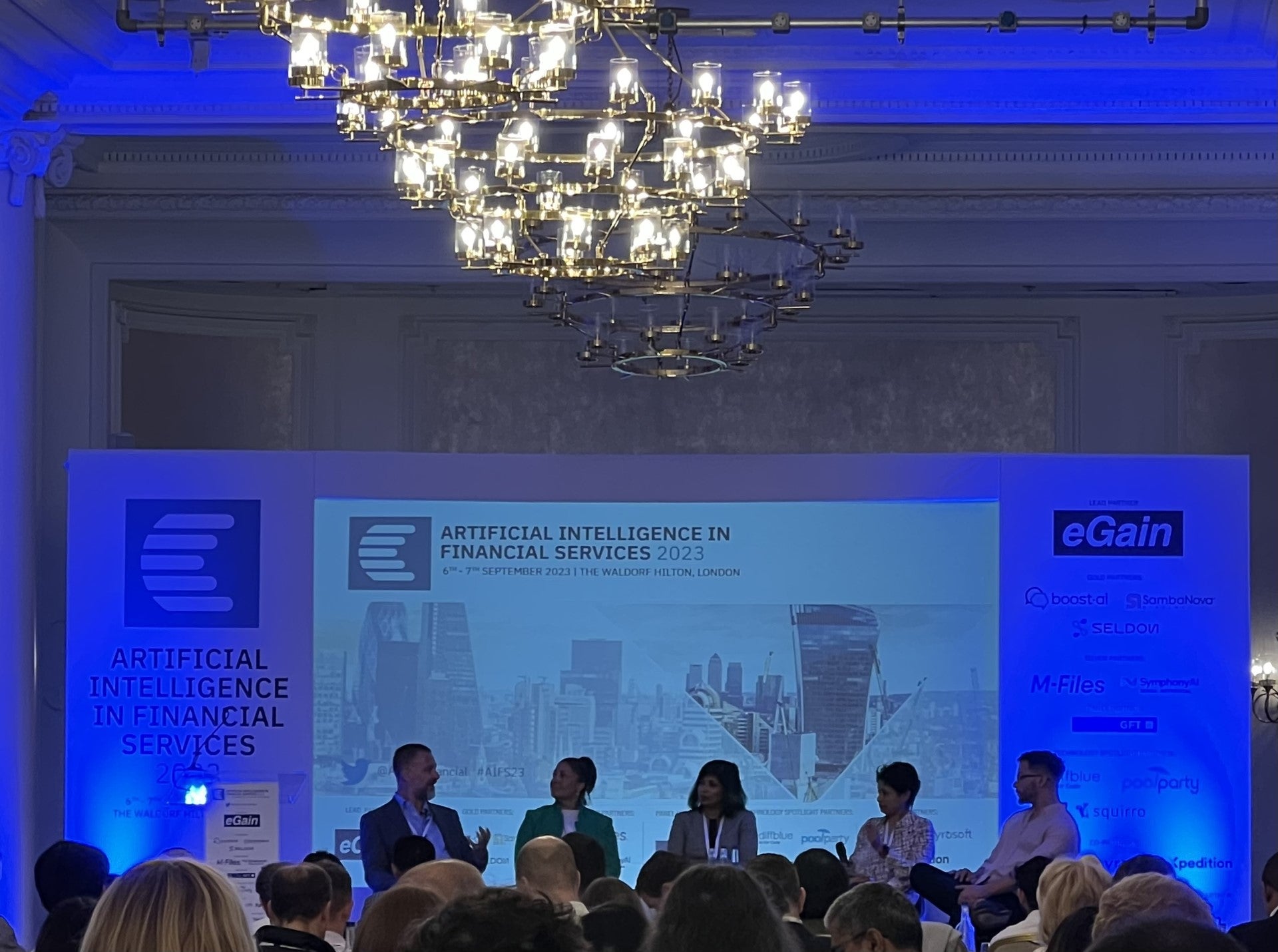
One of themes stealing the limelight at the Artificial Intelligence in Financial Services (AIFS) conference organised by Arena, the events division of GlobalData, publishers of PBI, was how AI can be utilised within risk management.
The conference attracted a stellar line-up of speakers and was held in the UK’s capital at the renowned Waldorf Hilton and concentrated on the most recent developments in artificial intelligence and how they are being used to enhance the financial services industry.
Organisations in almost every sector will need to use AI and rapid development techniques to keep up with their competitors and newly entrants into the market who are digital natives if they want to stay competitive.
However, companies must do this while controlling the innovative and various risks that AI and its quick development represents.
Ramon Perez, developer advocate at Seldon, outlined a step-by-step approach that firms could apply in his opening speech on the panel discussion of AI risk assessment and developing solutions:
- “Do we even need AI to solve whatever problem we’re designing a solution for?
- “Why do we need AI to solve it?
- “Who will it affect? Do we need personally Identifiable Information to build some sort of system that is going to make a decision faster and smarter for one of our customers, for one of our clients, or for one of our merchants?
- “Lastly, who will we involve in the process of creating this scene?”
Another issue that surfaced in the financial services industry was how to integrate data into business problem solving solutions while reducing service risk in the credit and lending industry.
How well do you really know your competitors?
Access the most comprehensive Company Profiles on the market, powered by GlobalData. Save hours of research. Gain competitive edge.

Thank you!
Your download email will arrive shortly
Not ready to buy yet? Download a free sample
We are confident about the unique quality of our Company Profiles. However, we want you to make the most beneficial decision for your business, so we offer a free sample that you can download by submitting the below form
By GlobalDataSusana Ponce Froment, global head of credit and financial risk at Tide, stated: “Organisations should be exploring, introducing machine learning models. To enhance the performance of a portfolio and minimise the losses of loans.”
As financial crimes become more complex, detecting and preventing fraud has emerged as a challenge for the financial services industry.
Unfortunately, financial crime has grown in parallel with technological advancements and transaction volumes.
The banking and financial services industry are still in the early phases of implementing new technology to prevent fraud, and there have been a number of reactions to the rise of AI’s potential to combat financial crime.
“The big benefit that we have here is the ability to real time, get information off resources, and stitch them together and something meaningful,” added Hasintha Gunawickrema, former chief control officer, wealth, and personal banking at HSBC.
“What we spend on huge amounts of money on training people and making sure they’re up to date with exemptions; AI will already have that semester and being able to add value to the person ultimately, so it’s definitely huge value in the strategy.”
In order to increase automation and enable better decision-making, banks are currently looking for ways to optimise their processes, better utilise their data, and apply new technologies.







